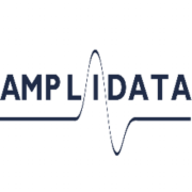


Find out what your peers are saying about StarWind, Red Hat, Nutanix and others in Software Defined Storage (SDS).
| Product | Market Share (%) |
|---|---|
| Pure Storage FlashBlade | 4.2% |
| Zadara | 1.9% |
| Amplidata | 0.3% |
| Other | 93.6% |


| Company Size | Count |
|---|---|
| Small Business | 11 |
| Midsize Enterprise | 11 |
| Large Enterprise | 20 |
| Company Size | Count |
|---|---|
| Small Business | 12 |
| Large Enterprise | 3 |
FlashBlade is the industry’s most advanced scale-out storage for unstructured data, powered by a modern, massively parallel architecture to consolidate complex data silos (like backup appliances and data lakes) and accelerate tomorrow’s discoveries and insights.
Amplidata’s Himalaya(TM) Service Provider and OEM Edition software is versatile platform for massively-scalable, secure and flexible storage services and solutions. With Himalaya, you have the freedom to offer customers trillions of stored objects – hundreds of exabytes of data – with more than 15 nines of data durability. Himalaya Service Provider and OEM Edition also comes with a rich set of management features, making it easy to meet monitoring, metering and billing needs as well as the storage flexibility demands of your clients. From multi- tenancy to non-disruptive changes in storage configurations, Himalaya easily adapts to the immediate needs of users without having to touch the hardware or the data. Himalaya’s patented, advanced BitSpread data protection and BitDynamics data integrity and repair technology dramatically reduce required capacity and operational overhead. Further, Himalaya runs on Intel-based commercial off the shelf hardware for reliable performance on the hardware of your choice.
Amplidata’s Himalaya™ Enterprise Edition software gives you unprecedented control over your data. It was built from the ground up to deliver easy access to trillions of stored objects – zettabytes of data – with more than 15 nines of data durability from our patented BitSpread, BitDynamics, and GeoSpread technologies. Himalaya Enterprise Edition also comes with a rich set of management features, making it easy to meet the needs of your internal clients. From multi-tenancy to non-disruptive changes in storage configuration and allocation, Himalaya easily adapts to the immediate needs of your organization without having to touch the hardware or the data.
Zadara is a powerful enterprise-level storage solution whose design enables it to handle every aspect of a user’s data storage needs. It can be deployed in any location, using any protocol, and storing any data type that an organization requires. With Zadara, organizations can do everything that they were able to do with more traditional systems in a cheaper and more efficient way.
Zadara Benefits
Some of the ways that organizations can benefit by choosing to deploy Zadara include:
Zadara Features
File analytics. Organizations can leverage a powerful analytics package that can provide them with critical insights. These tools can help users sort through their data and make more informed data management decisions.
Reviews from Real Users
Zadara is a highly effective solution that stands out when compared to many of its competitors. Two major advantages it offers are its extensive suite of cloud solution integrations and its object storage capability.
Steve H., the chief technology officer at Pratum, writes, “One of the most valuable features is its integration with other cloud solutions. We have a presence within Amazon EC2 and we leverage computer instances there. Being able to integrate with computing, both locally within Zadara, as well as with other cloud vendors such as Amazon, is very helpful, while also being able to maintain extremely low latency between those connections.”
Mauro R., the CEO of Momit SRL, says, “The object storage feature is wonderful. With traditional storage, you have a cost per gigabyte that is extremely high or related to the number of disks. With Zadara Storage Cloud, you have a cost per gigabyte that you can cut and tailor to your needs independent of the number or size of the disks.”
We monitor all Software Defined Storage (SDS) reviews to prevent fraudulent reviews and keep review quality high. We do not post reviews by company employees or direct competitors. We validate each review for authenticity via cross-reference with LinkedIn, and personal follow-up with the reviewer when necessary.